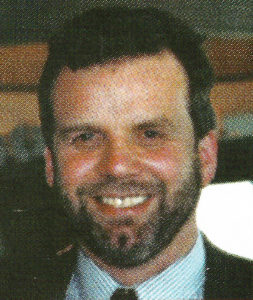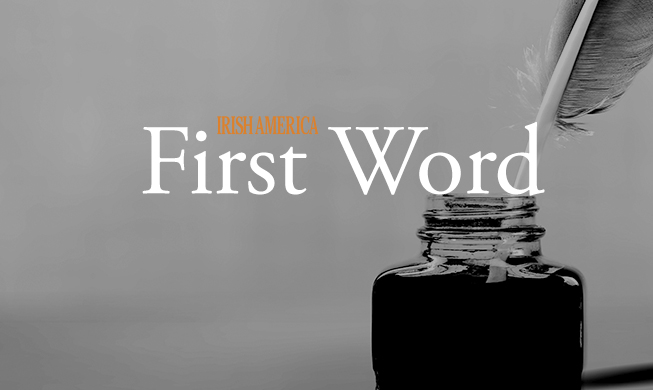
Sometimes a story comes along that captivates even the most cynical of us journalists — a notoriously hard-to-impress bunch at the best of times.
Such a story is this issue’s cover feature on Aimee Mullins, the daughter of an Irish immigrant father and American mother, who is fast becoming one of the nation’s most inspirational stories.
At the age of one, Aimee had to have both her legs amputated below the knees. It would mean a lifetime sentence in a wheelchair, or worse, I’m sure many thought at the time.
There are home videos of Aimee soon after the operation; watching them, you can already sense the extraordinary strength and spirit emanating from her little body. Though she is literally legless, the little baby is crawling as fast as she can, a strangely determined smile fixed on her face.
Fighters come in many packages, from Mohammed Ali and Evander Holyfield to a little toddler defying all the odds. Even back then, Aimee Mullins could show far bigger and older human beings what perseverance and courage is all about.
Teachers too come in all shapes and sizes, not necessarily the men and women we remember from high school. From infancy, Aimee Mullins had something to teach the world about overcoming adversity and about beating the odds.
There are later home movies of Aimee playing softball, Aimee goofing around with her friends and family, Aimee and her grade school classmates. In all of them you have to look closely to notice that Aimee is laboring under an incredible handicap. She runs towards first base on her inadequate limbs as determinedly as Ken Griffey, her playmates knock her over and she bounces back up like a normal limbed kid.
But it was in high school and college that Aimee really began to shine and provide inspiration to others. `Handicap, what handicap?’ she seems to be saying as you look at all the photos and videos from her track career, her long jump pictures, her determined races against athletes far less challenged than she is.
Add to her courage a dynamic personality, beautiful looks and a carefree and engaging manner and you have a definition of star quality.
Little wonder that the world has come calling to her doorstep: Sports Illustrated and Life Magazine recently featured major profiles of her, to name but two.
When Aimee attended our Top 100 Irish Americans event this year she stole the show. We showed the video from Dateline NBC, which shows her running on those extraordinary legs, then long jumping, then trying the javelin. She spoke about challenging people’s idea of beauty and the myth that disabled people are less capable, less interesting. She said she didn’t want to be described as a disabled athlete, but rather as just an athlete.
Her parents, she said, never allowed her to think she was different, taught her to know that there wasn’t anything she couldn’t achieve. Her comment that her parents never really considered that she had achieved anything extraordinary, despite all her honors, until she made the Top 100 list was greeted with warm applause and laughter.
When she finished she received a lengthy standing ovation.
Academically she is a shining star, graduating near the top of her class at Georgetown’s notoriously competitive School of Foreign Service and she has a very bright career ahead of her in whatever path she chooses.
She was our unanimous choice for cover story this issue, not because she is particularly well known in the Irish American world, or because she has accomplished earth-shattering deeds. The cover story is as much about her parents as about her, their extraordinary commitment to their disabled child, their determination to make her feel that she was just as talented and as capable of achieving as any other child on earth. In many ways that commitment and love of family is what Irish Americans are all about.
In saluting Aimee and her parents we salute those generations of Irish who selflessly sacrificed so that their children could have the best things in life. Aimee, you make us all proud.
Editor’s Note: This article was originally published in the July/August 1998 issue of Irish America. ⬥


Leave a Reply